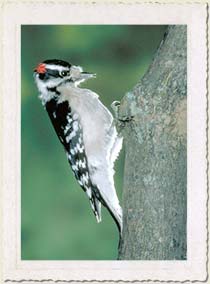
Seton Falls Park Preserve
Borough: Bronx
Acres: 36
Habitat Type: Forest, Freshwater Wetland
Map: PDF
Seton Falls Park contains a thriving wetland as well as a forest largely undisturbed since the American Revolution. Together these ecosystems provide habitat to over 30 species of bird. Floodplain forest is present along Rattlesnake Creek, as are cattail marsh and sedge meadow, at the bottom of a sheer, rocky ravine. Floodplain forests grow on mineral soils in the lowlands of river floodplains and deltas. These areas are characterized by their flood regime: low areas are annually flooded in spring and high areas are flooded irregularly. Above the ravine, oak-hickory and successional forests are dominant. Oak-hickory forests occur on well-drained sites, often on ridge tops, upper slopes, or south and west facing slopes.
To address areas of the park that had fallen victim to human disturbance, the Parks Department’s Natural Resources Group completed a four-acre forest and wetland restoration project in the Spring of 2004. Invasive plants had dominated the southern wetland area of Rattlesnake Creek, and the surrounding forest. A monoculture of common reed ( Phragmites australis) was excavated and replaced by an area of open water fringed by diverse wetland plantings. The forest slopes were rid of invasive trees and vines, the slopes were secured with erosion control textiles, and replanted with native forest trees, shrubs, and herbaceous plants. This project was funded by the New York State Clean Water/Clean Air Bond Act and the City of New York.
A “haven” for wolves and rattlesnakes when Europeans first settled, today Seton Falls Park is home to a plethora of more benign animals including salamanders, dragonflies, chipmunks, tree frogs, swifts, hawks, thrushes, wood peckers, and butterflies. The monarch butterfly (Danaus plexippus) is frequently seen at Seton Park’s lawn. Despite their frail appearance, these butterflies endure a long and perilous migration thousands of miles south to Mexico each year to escape the harsh winters of the North.
Directions
Public Transit:
By Subway: Take the 5 to Eastchester Dyre Ave. Walk west on E. 233 St. and the park is on the south side of the street.
By Bus: The Bx16 bus runs along E. 233 Street with a stop at E. 233 Street and Seton Ave. Walk west on E. 233 Street and the park is located on the south side of the street.
By Car: From I-95 North, merge onto Baychester Ave. via Exit 12 on the left. After about 1.5 miles make a right on E. 233 Street. Parking is available on the street and the park entrance is to the right.
From I-95 South, take Exit 13 toward Conner Street, and then turn a slight left onto Hollers Ave. Turn right onto Conner Street, which becomes Provost Ave. Turn left onto 233 Street and parking is on the street and the park entrance is on your left.
From Bronx River Parkway South, take the exit for Bronx River Road. Turn right onto Bronx River Road, then a slight right onto Wakefield Ave, which becomes E. 241st Street. Stay straight to go onto Baychester Ave. and turn left on E. 233rd. Parking is on the street and the park entrance is on the right.
The entrance to the park is adjacent to the playground on E. 233, just east of the intersection of E. 233, Grenada and Baychester Ave.
